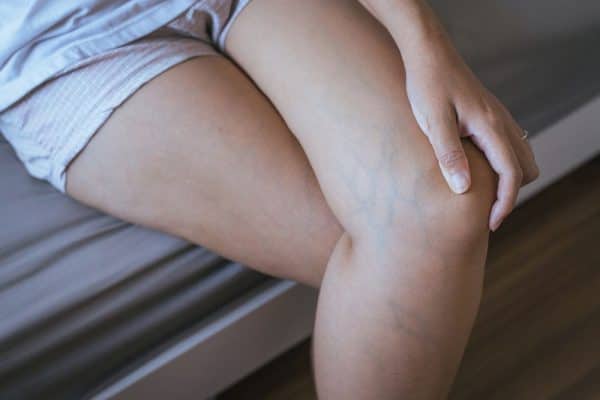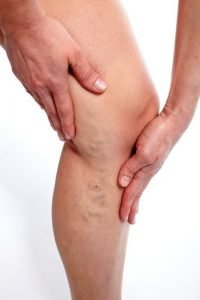
The role of varicose veins is a progressive and complex illness. It currently affects millions of Americans due to age, gender, weight, and a myriad of other conditions. Here are some of the most common reasons for lower leg swelling to know.
Endovenous thermal ablation, also known as endovenous ablation, is a big-sounding name for a varicose vein treatment commonly called “laser therapy.”
Patients suffering from varicose veins or incompetent veins have a variety of options for treatment available to them, and one of the newer techniques utilizes a laser or high-frequency radio waves to create intense local heat in the varicose vein.
The use of radio waves or laser energy can cauterize and close the varicose veins in the legs.
There are several reasons patients prefer endovenous thermal ablation over other kinds of treatments. The procedure offers a variety of benefits making it one of the most convenient choices available.
Endovenous thermal ablation is less invasive than other kinds of treatments used to deal with varicose veins, and laser therapy leaves virtually no scars.
Patients who are suffering from pain caused by varicose veins will find that endovenous thermal ablation can relieve them of the pain and discomfort of varicose veins.
Endovenous thermal ablation will also dramatically reduce the unsightly disfigurement caused by varicose veins, leaving patients with virtually no scarring or staining.
Endovenous Thermal laser therapy is a relatively quick treatment that can be performed in an outpatient setting with only local anesthetic. It treats varicose veins by damaging the walls of the incompetent veins, shrinking them, and closing them off so that blood cannot flow through the varicose vein.
The treatment requires mapping the vein with an ultrasound. After a local anesthetic is given, a thin fiber is inserted through a tiny entry point. The thermal energy or laser is delivered to treat the faulty vein.
Patients should plan to have a relative or friend drive them home after the treatment, but recovery time is very fast. Patients are typically encouraged to walk immediately following the procedure and normal daily activities can be resumed immediately.
Some patients may experience minor, temporary soreness and bruising, but that can be treated with over-the-counter, non-aspirin, pain relievers.
Contact us to learn more!
Traditionally, with age comes a release of the classic signs of attractiveness like wrinkle-free arms, mole-free faces, and varicose-vein-free legs. But despite being associated with aging in women, varicose veins are far from a classic sign of aging beauty. While often seen as a primarily cosmetic concern that emotionally affects women, these bulging veins affect both women and men and both youth and golden-aged people.
Despite the cosmetic implications, the appearance of varicose veins is a treatable medical condition that flows throughout the world with little preference for gender. According to research, an estimated 40% of men are stricken with the condition. The men and women who find themselves with bulging veins have more to worry about than appearance. Varicose veins can lead to conditions like skin-bleeding, skin discoloration, skin ulcers, and a “heavy leg” sensation.
This condition has a strong genetic component, where veins in the lower extremities expand when standing erect, and then do not return to their original position. Those genetically predisposed to weaker vein walls are at risk of developing varicose veins. Thankfully for men, overcoming a genetic predisposition for varicose veins doesn’t require anything outrageous. Experts say that exercising is the easiest way to maintain a consistently strong blood flow and keep the walls of the veins strong and in top condition.
Also, men who enjoy those pepperoni pizzas, flaming hot buffalo sauces, and tasty hot sausages may have to simmer those habits down in favor of a good, healthy vein flow. Research indicates that a high sodium diet most certainly contributes to the development of varicose veins.
And finally, the last and most difficult task performed in order to avoid those popping varicose veins: GET UP! While many of us have the misfortune of working in an office where our bums do most of the heavy lifting all day, this unhealthy habit leads to blood pooling and exaggerated veins. While doing a full-on bodybuilding session in the middle of the office is far from optional for most of us, 55-year-old you will thank you kindly or years to come for taking those extra bathroom breaks.
Because varicose veins are often marketed as a mere cosmetic problem strictly for older women, men of all ages are done a huge disservice. If symptoms of restless leg syndrome, pain in calves after walking, and muscle cramps, consistently affect you, regardless of gender, then non-cosmetic treatment plans might be the option.
Please contact us today! to do a professional evaluation!

Healthy veins have valves that keep blood from flowing down as it is pumped up through the leg. Bulging veins occur when these valves malfunction and allow blood to flow backward and pool into the vein. They can be caused by a number of conditions that affect the vein directly or not. For example, bulging veins are often caused by swollen veins or thrombophlebitis, but they can also be caused by more general states of being such as pregnancy, old age, obesity, or lack of movement.
Other causes of bulging veins could include blood clots, abdominal tumors, low body fat, or genetics.
There are an array of symptoms that can let you know you might have bulging veins. Bulging veins in the legs can cause:
Bulging veins don’t always affect only your legs, though. They can also go along with symptoms of other conditions that impact different areas of the body. You may experience symptoms of diabetes, for example, with skin ulcers near the feet, damage to blood vessels, or wounds that heal slowly. Other symptoms of pregnancy, obesity, or thrombophlebitis could also indicate bulging veins.
Sometimes, bulging veins can be a sign of a more serious medical condition. Seek immediate medical attention if you experience sores or ulcers on your ankles, thickening of the skin around your calf and ankle, warmth and redness in the leg, bleeding from an injury to your vein, or a pulling feeling in your leg. These could be symptoms of life-threatening conditions such as blood clots, tumors, or infections.
In the early stages, bulging veins may be treated with compression socks and exercise. This may also help future bulging veins from forming. More serious cases of bulging veins should be treated by a doctor. Common treatments include different therapies, medicines, and procedures, and are often minimally invasive.
Once you’ve determined you do have bulging veins, it’s important to treat them properly. Leaving bulging veins untreated increases your risk of potential complications such as skin ulcerations, blood clots, and increased swelling and pain.
Reduce your chances of forming bulging veins by keeping your body healthy. Exercise regularly and monitor your weight. This will ensure proper circulation and help you avoid putting too much pressure on your legs. Avoid crossing your legs or wearing high heels for long periods of time. This will help your blood flow through your veins properly. Maintain a healthy, low-salt diet rich in fiber. Though not all bulging veins can be avoided, following these tips will reduce your chances and keep you healthy.
*Author is not a doctor and does not claim to offer medical advice. Any and all information in the is article should not be treated as such. Please consult your physician for further information.